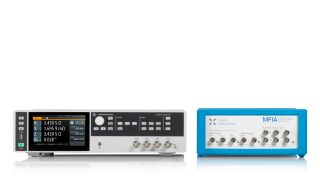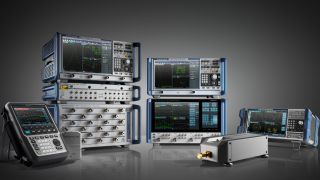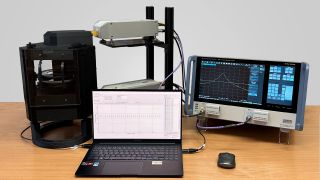Rohde & Schwarz supports material science research with its strong background in RF technology. In July 2021, we also welcomed Zurich Instruments to the Rohde & Schwarz family. Zurich Instruments provides impedance measurement and material science solutions that perfectly complement the Rohde & Schwarz portfolio.
Impedance analyzer - low frequency measurements
A dielectric is an electrical insulator with a very low conductivity at DC because of its polarizability. It can also store charges in the low and mid frequency ranges. This capacitive effect makes dielectrics useful for charge storage and dissipation. It’s important to understand the dielectric constant of a material being used in a capacitor or thin-film dielectric applications, such as:
- Low-loss electrical components
- Energy storage devices, such as supercapacitors
- High-k and low-k gates in semiconductor devices
- Piezo- and ferro-electric sensors and transducers
An impedance study of dielectrics is necessary to fully understand the material physics as well as to optimize device performance.
An impedance analyzer is the instrument of choice for measurements at low frequencies. The Zurich Instruments MFIA can conduct measurements over a frequency range of 1 mHz to 5 MHz and calculate impedance parameters, such the dielectric constant and dissipation factor.
Dielectric characterization with an impedance analyzer is carried out on a sample with a well-defined geometry, contacted with two electrodes. Typically, this is achieved with a parallel plate fixture. Based on this geometry, the dielectric constant (permittivity) can be extracted, since the dielectric constant is the ratio of the material capacitance to the air capacitance.
Vector network analyzer (VNA) - high frequency characterization
High frequency characterization requires a VNA. The measurement method depends on the required frequency range and the desired measurement speed and accuracy. The four most commonly used methods are:
- Transmission/reflection method
- Free space method
- Open-ended coaxial probe method
- Resonant (cavity) method
The physical and dielectric properties of the material are also important. For example, is the material a solid-state material, a liquid or a powder? Is it very hot, or does it have a particular shape? These properties have a strong influence on which characterization method is the most suitable.
The measurement method also determines the material sample fixtures that are needed in addition to the VNA.












